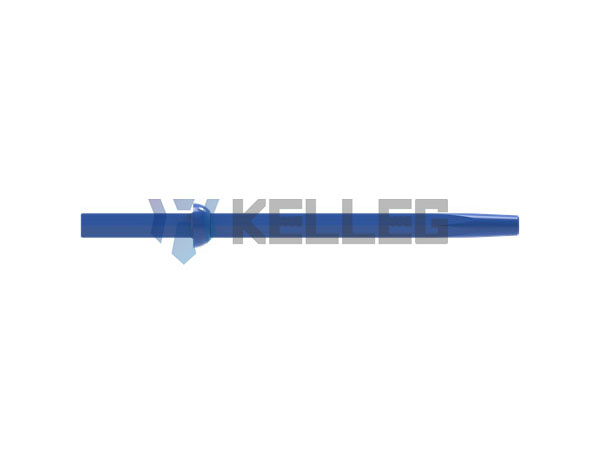2020 官网升级中!现在您访问官网的浏览器设备分辨率宽度低于1280px请使用高分辨率宽度访问。
A drill rod is a tool used to connect the drill bit and rock drilling. As one of the most used products in rock drilling tools, its quality directly affects the rock drilling efficiency of the project. The quality of the drill rod depends on steel grade, heat treatment, quality of producing process, structural design of drill rod, the transition between different sections, and many other factors. Among them, the heat treatment is the main reason for the drill rod’s low life or early failure. Therefore, the heat treatment process of the drill rod can effectively improve the quality and service life of the drill rod and reduce consumption. Since the relatively large variety of drill rods, today we mainly share with you the commonly used heat treatment processes for tapered drill rods. Before understanding it, we need to understand what heat treatment is.

Heat treatment is a process of heating, holding, and cooling solid metals or alloys in a medium to change the overall or surface structure to obtain the desired properties. According to the required properties, there are many types of heat treatment, and the process includes heating, heat preservation, and cooling in three stages.
Combined with the concept of heat treatment, let’s learn the principles of selecting the heat treatment process for drill rods.
1. The basis for the selection of the heat treatment process of the drill rod is the steel grade. Different steel grades for different types of drill rods. In the production of drill rods, only by selecting the correct steel grade can it be possible to choose a heat treatment process that can give full play to the advantages of the steel grade to ensure the quality and service life of the drill rod. Different steel grades have different options for the best heat treatment process.
2. The selection of the heat treatment process of the drill rod is based on the basic requirements and the failure mechanism of the drill rod. The basic requirements of drill rods vary according to their own. The reasons for the failure of drill rods often include the unreasonable structural design of the drill rod or defects in the processing steps of the drilling process, mistakes in operation during use, etc. However, whether the heat treatment process is appropriate and whether there are quality problems during heat treatment are the essential factors. For the main reason for the failure of the drill rod, after excluding various external factors, select the best heat treatment process to ensure the internal quality.
3. The selection of the heat treatment process of the drill rod should follow the economy, rationality, and feasibility. The biggest feature of the drill rod is the significant limitations of the heat treatment due to it being too long. Often a heat treatment process cannot meet the basic requirements of each part of the drill rod. Only by selecting several heat treatment processes and treating each part separately, can the basic requirements of each part of the rod be guaranteed. So it needs to be considered.
4. The final criterion for the heat treatment process selection is the actual service life of the drill rod. The long service life in the mine rock drilling test is the most important basis for the heat treatment process selection.
Combined with the above content, let’s take a look at the commonly used heat treatment processes for tapered drill rods?
1. Normalizing
The tapered drill rod is thin and long, and if quenched as a whole, it is easy to deform, the most commonly used heat treatment process for it is normalizing, and the most suitable is medium frequency induction normalizing. The normalizing of the tapered drill rod is carried out after forging the collar and sharpening the molding. The purpose of normalizing is mainly to refine the grains, eliminate the stress after forging, obtain high fatigue strength, good damping performance, and relatively uniform structure, as well as lay a good foundation for the shank adapter quenching. It can be seen that normalizing is one of the most important heat treatment processes for tapered drill rods.
2. Quenching
Quenching is the heat treatment process of heating the steel to a critical temperature (or above), holding heat for a definite time, being austenitized, then, obtaining the martensite by rapid cooling at a cooling rate greater than the critical cooling rate. Because the tapered drill rod shank has to withstand the high-frequency impact of the rock drill piston, and the hardness of the piston is usually in the range of HRC59-HRC62, the shank adapter must be quenching.
3. Tempering
The drill rod cannot be used directly after quenching and must be tempered. Tempering is a heat treatment process in which the drill rod is heated to a temperature below Ac1, held for a definite time, and then cooled to room temperature to eliminate internal stress. Then we can obtain the required structure and properties after quenching.
To sum up, after the heat treatment of the drill rod, the performance will be better, and the service life will be longer. Drill rod manufacturers need to select a suitable heat treatment process to ensure the quality of the drill rods and prolong the service life of the drill rod from the source.